 username@email.com
username@email.com
In this lesson, you will review the various processes of natural selection.
Charles Darwin’s theory of evolution is the cornerstone of all biological study. Central to Darwin’s theory is the concept of natural selection.
Natural selection describes the process of reproductive success in organisms best adapted for their environment. Darwin developed this concept after observing the finches of the Galapagos Islands. On the islands, he identified 13 different finch species. This intrigued him because he had observed only a single finch species living on nearby mainland South America.

Illustrations of finch beaks
Darwin observed that the Galapagos finches had a wide variety of beaks that seemed to correspond to an adaptation to diverse environmental conditions found on the islands. Claw-like beaks enabled finches to eat buds and fruit. Extended beaks facilitated the extraction of grubs from the ground. Heavy beaks provided the means for breaking seed coats and consuming seeds. Darwin surmised that, over time, the original finches evolved with beaks best suited for diverse functions. The finches with the better beak adaptations for their environment were successful and survived to reproduce. Each generation had passed along the beak adaptations to offspring who were also more successful.
Darwin concluded that the finches arriving from the mainland had adapted to different environmental conditions found on the Galapagos Islands. Anatomical changes to the finches had occurred over the course of several generations. The beak changes allowed the finches to access food to survive and reproduce. Darwin’s work opened the doors for evolutionary biology and a greater understanding of the natural world.
What observation initialized the concept of natural selection?
The correct answer is B. Choices A and C have contributed to the support of natural selection. Choice D refers to Mendel’s research on independent assortment.
Scientists now know that there are several types of natural selection. Without any pressure on organisms, population traits vary widely. For example, there are varying heights of sunflower plants. Most plants are medium height, while some individuals are extremely tall or extremely short. A normal bell curve reflects this trait distribution.
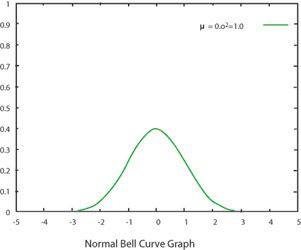
Stabilizing selection occurs when selective pressures cull out the two extremes in a population. With the sunflower example, taller plants might not survive windy conditions and shorter plants might not thrive in the shade of medium or taller plants. The medium height plants would prevail over the two extremes. As the range of traits decreases in the process of stabilizing selection, the genetic diversity decreases.
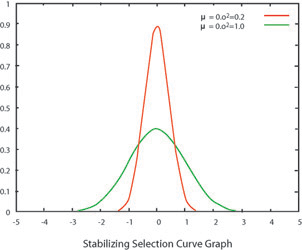
What is the effect of stabilizing selection on a normal bell curve?
D is the correct choice. Choices A or B refer to directional selection. Choice C is incorrect because a change will occur when selection occurs.

A giraffe’s long neck serves as an example of directional selection. At some point, short necks came under selection pressure. Individuals with shorter necks were less able to reach leafy food supplies. Over time neck length shifted in favor of individuals with longer necks. One extreme of the trait distribution (short necks) was selected against in a process termed directional selection. The trait distribution shifts toward the other extreme, long necks. As the range of traits decreases, the genetic diversity decreases.
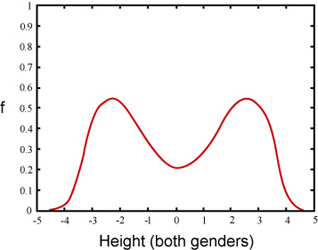
Selection pressures of disruptive selection act in the middle of the trait distribution. In the sunflower example where there are variable heights, there may also be pollinators with height preferences. Insect species might be attracted to each height level of the sunflower. However, if the middle height pollinators disappear, the middle height sunflowers would be selected against. Over time the sunflower population would shift toward survival of shorter and taller individuals. In this case, as the range of traits increases (short and tall) the genetic diversity increases. Populations like this sunflower example exhibit more than one distinct form or morph. The effect of disruptive selection is a polymorphic population.
Which graph depicts disruptive selection?
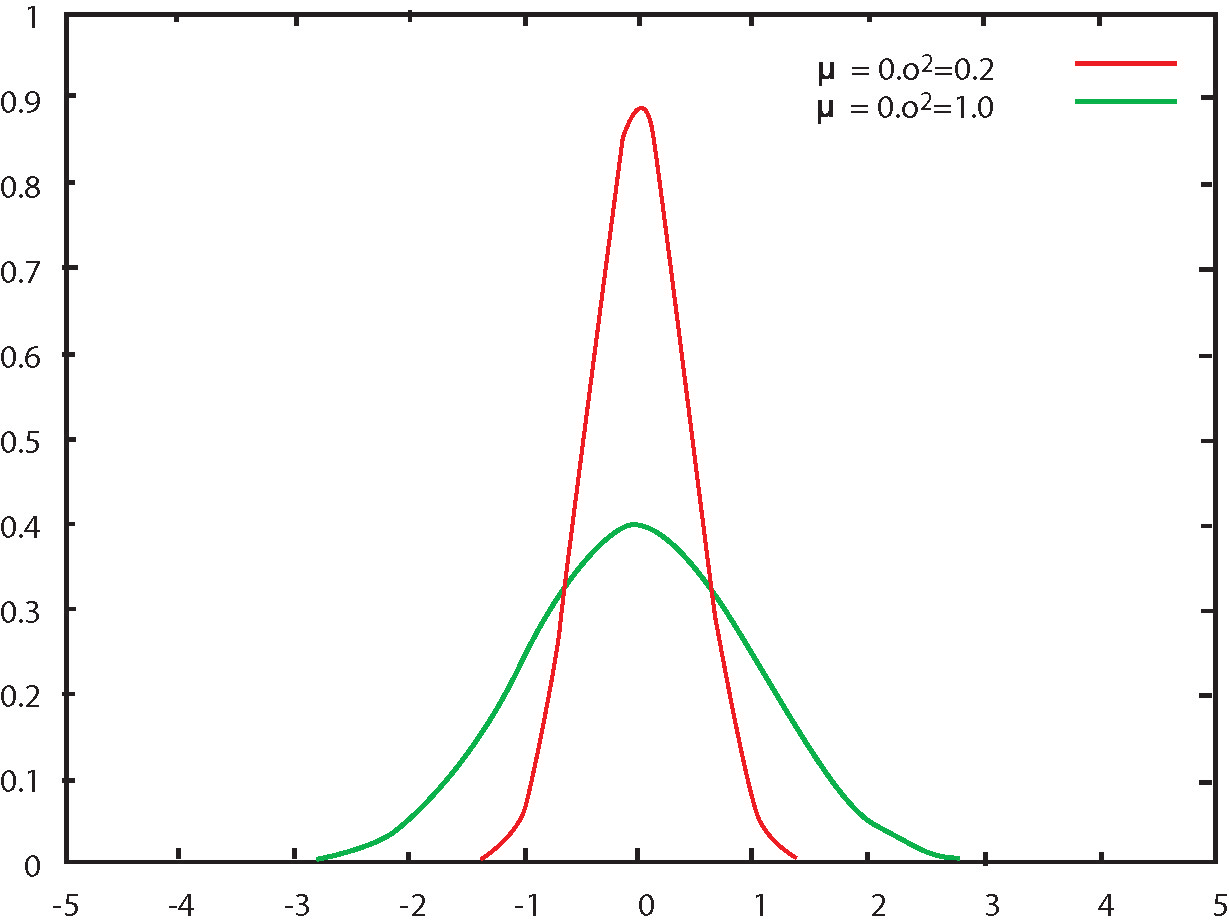

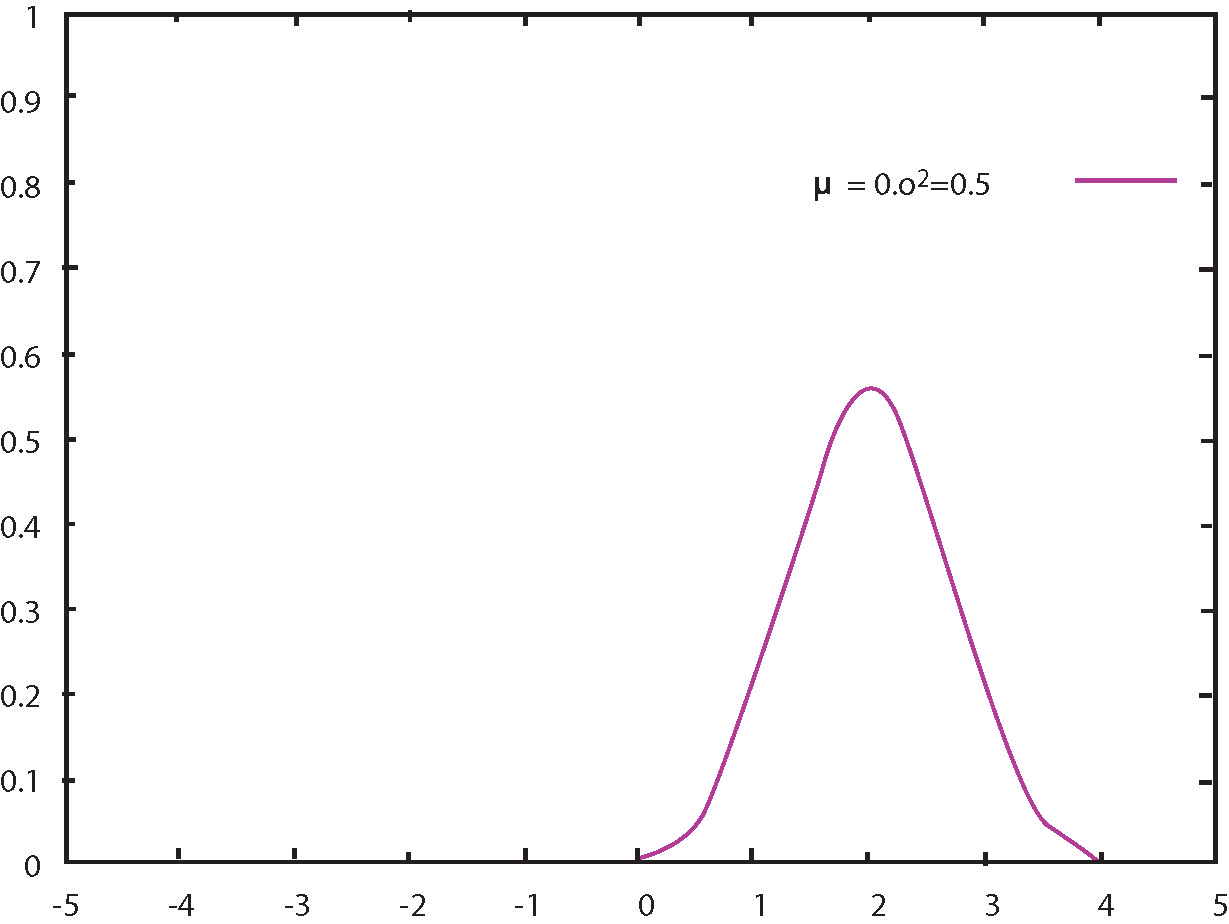
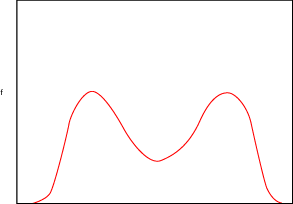
D is the correct choice. Choices A and B refer to directional selection. Choice C is incorrect because a change will occur when selection occurs.
Previously described forms of selection focused on the ability to secure food and survive. Darwin had other ideas about natural selection. One idea was sexual selection, which he believed depended upon mating. He postulated that mate shortages produced selection pressure on species that resulted in the evolution of sexually dimorphic characteristics. Sexual dimorphism is the difference in form between the genders of a given species. Traits that improve an individual’s ability to locate, attract, or compete for a mate are the keys to sexual selection.
Many species display sexual dimorphism. For instance, male mammals are frequently larger than females. By contrast, female insects are often larger than male insects, as the females need a larger body size to support egg carrying. Birds are particularly known for their sexually dimorphic traits, especially coloration. Sexually dimorphic traits, in general, may include stingers, eye size, coloration, as well as horns, antlers, and other body weaponry used to acquire dominance and secure access to breeding partners.
The mating system of a species can affect sexual dimorphism. Species that are monogamous, smaller in size, and arboreal are among those that tend to be less sexually dimorphic compared to those that are polygamous, larger in size, and terrestrial. In societal groups, such as sea lions, where a single male breeds with a harem of females, body size and canine size are important defensive tools for breeding rights. By contrast, in multi-male social groups, intelligence is more important than body size. These social groups often display cooperation to defeat dominant individuals and improve access to mating.
Sexual dimorphism would seem to come with some risk. Although a brightly colored Northern Cardinal male may attract a female, it may also have higher visibility to predators. Coloration may be both a sexually competitive advantage and a survival disadvantage.
White-tailed deer provide another example. The male expends significant energy growing a rack of antlers and carrying it throughout the breeding season. Antlers provide weaponry required to improve access to breeding. In the big picture, an individual’s reproductive success seems more important than longevity. An individual successful in attracting and mating with a partner passes on adaptive characteristics to the next generation.
Which trait could be both a competitive advantage and a survival disadvantage?
The correct answer is A. A mature male deer with a large rack could compete for breeding rights; yet, this comes at a high-energetic cost and he could also be a target during hunting season. The large size of a female insect is an advantage because it assists in egg carrying. A large male breeding a harem of females is primarily advantageous. Cooperative fighting is an advantageous method to improve access to mating.